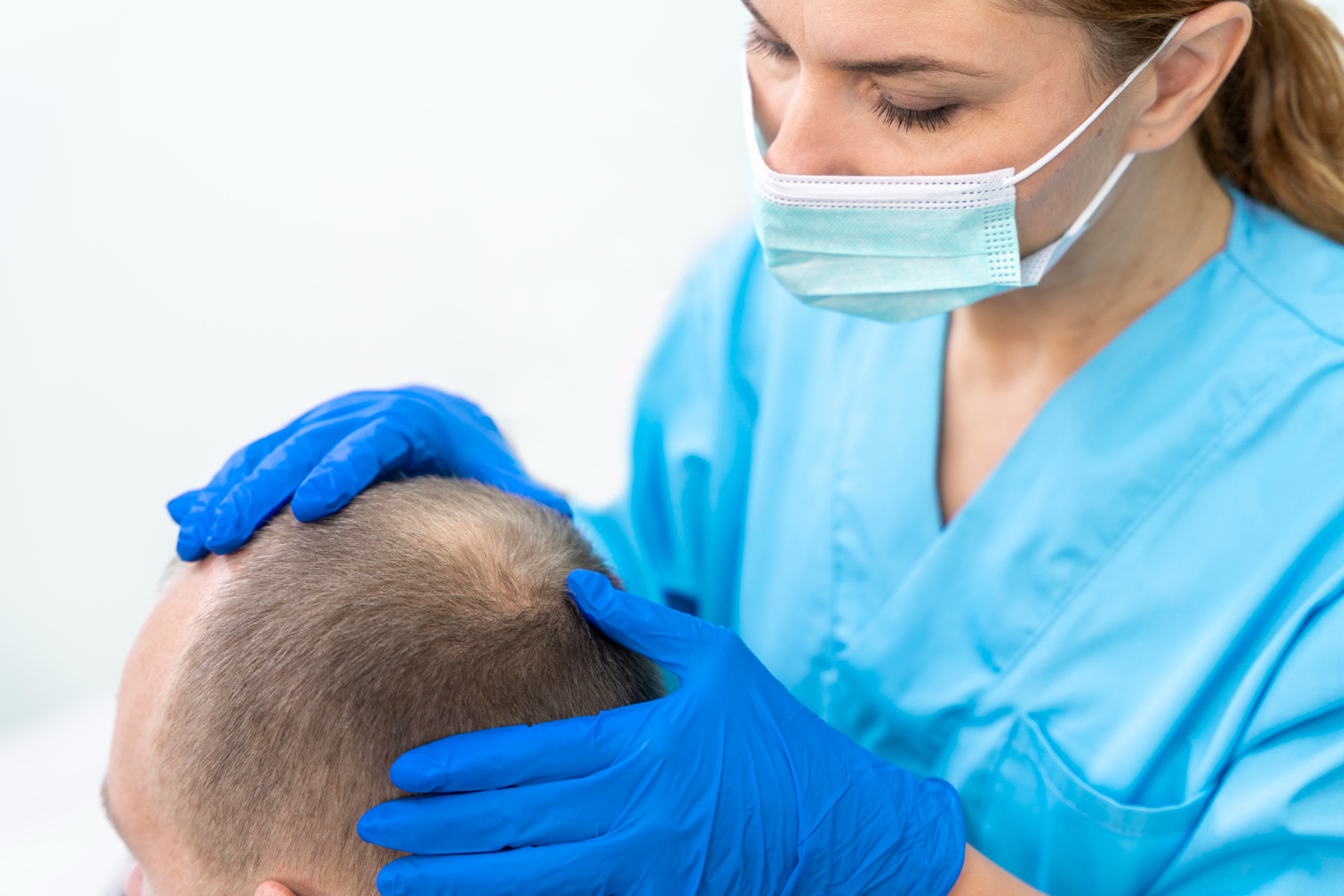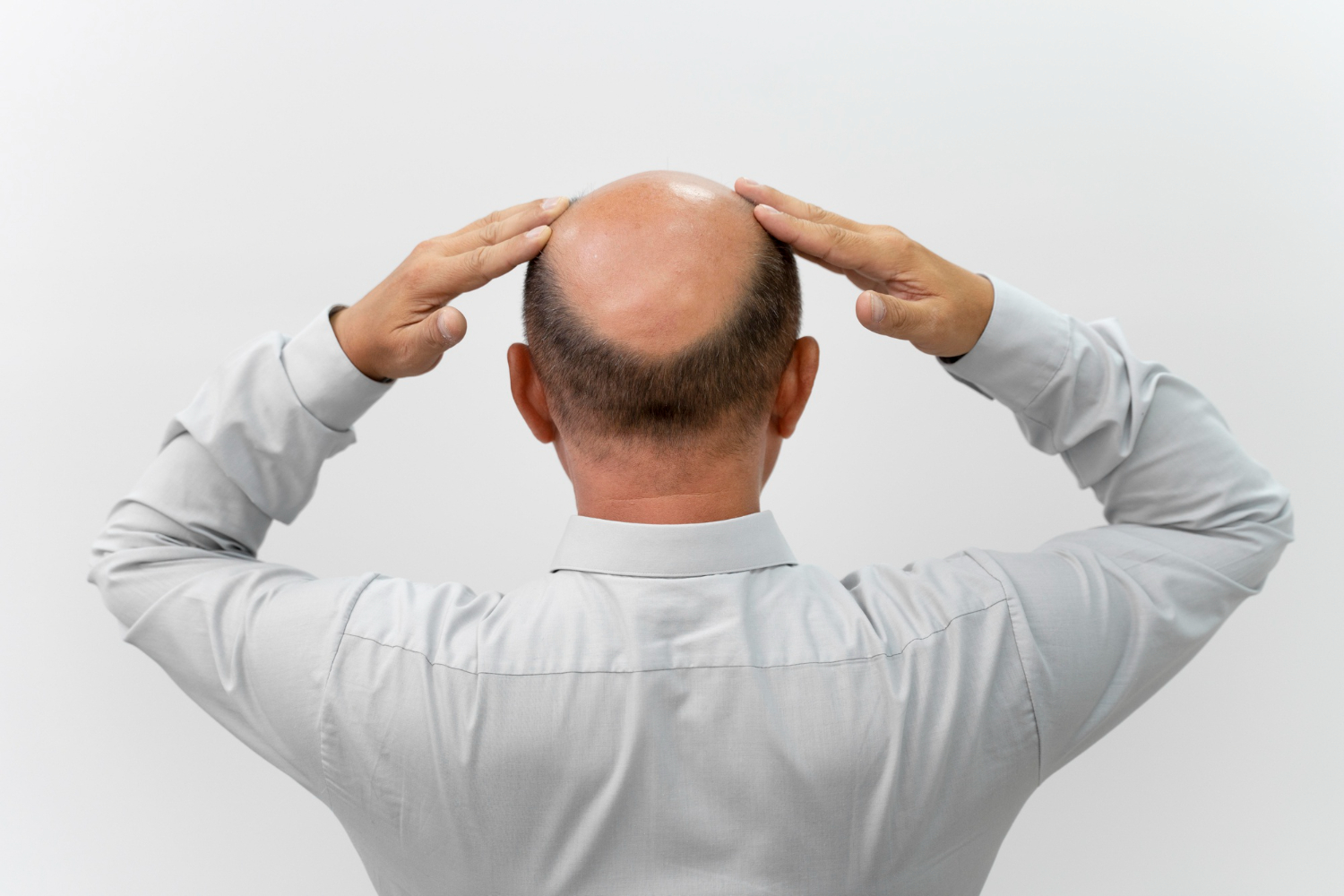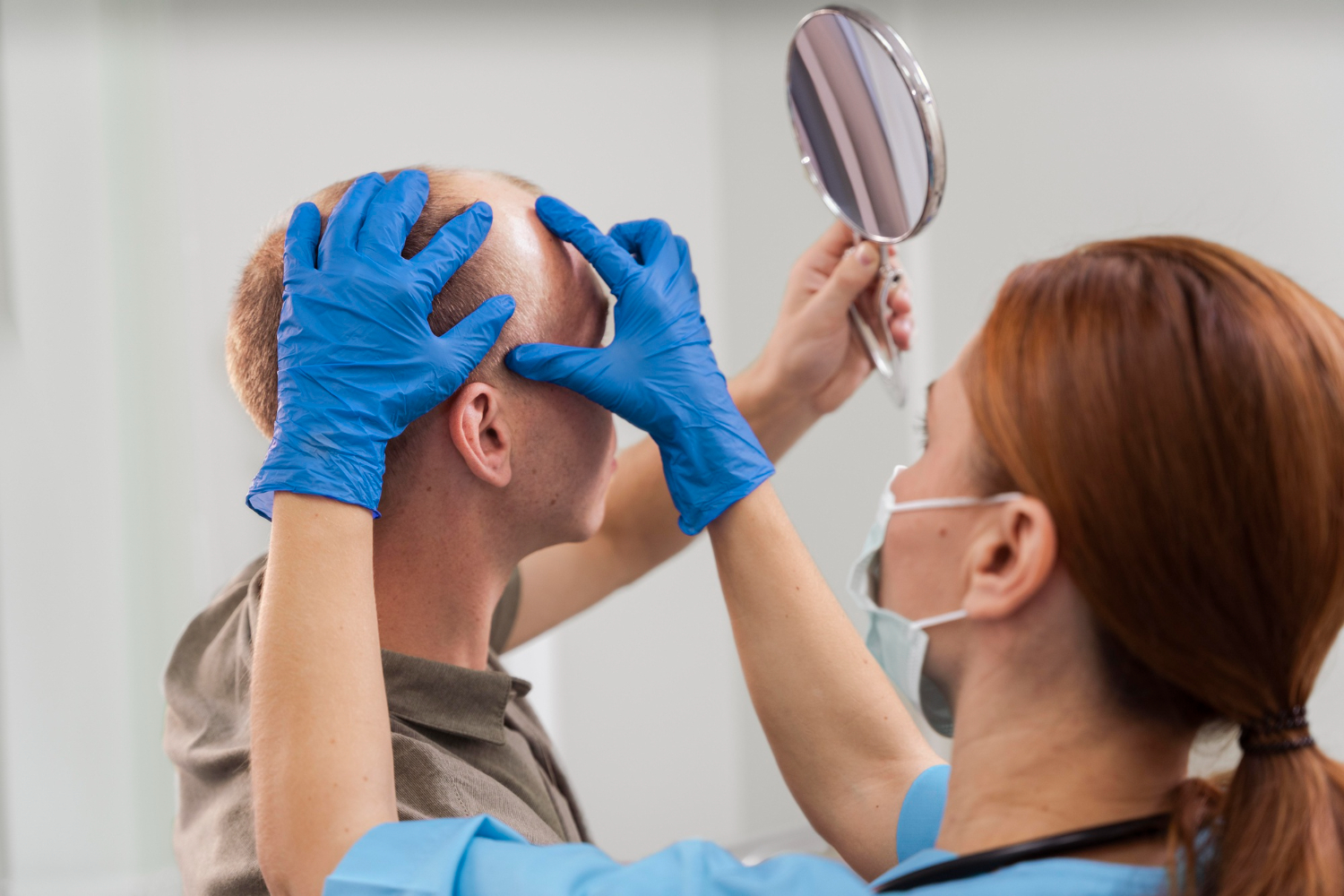
Androgenetic Alopecia, commonly known as male or female pattern baldness, is a prevalent form of hair loss that affects millions of people worldwide. This condition is characterised by a gradual and predictable thinning of hair on the scalp. While it’s more common in men, women can also experience Androgenetic Alopecia. In this blog, our experts will explain the causes, symptoms and treatment options to manage this condition.
Causes of Androgenetic Alopecia
Androgenetic Alopecia is primarily hereditary and linked to genetics. It’s influenced by a combination of genes from both your mother and father. The main culprit is dihydrotestosterone (DHT), a hormone derived from testosterone, which can shrink hair follicles, making them unable to support healthy hair growth. The sensitivity of hair follicles to DHT is genetically determined.
Ageing is another factor that contributes to Androgenetic Alopecia. While it can begin in the late teens or early twenties, it often becomes more noticeable with age. As individuals get older, their hair follicles may become more sensitive to DHT.
Symptoms of Androgenetic Alopecia

Understanding the symptoms of male pattern baldness is crucial in addressing this common issue, as early diagnosis can help manage the condition more efficiently.
1. Gradual Hair Thinning
One of the hallmark symptoms of Androgenetic Alopecia is a gradual thinning of the hair, typically starting at the temples or crown of the head. This often results in a receding hairline in men, while women may experience diffuse thinning over the top of the scalp.
2. Miniaturisation of Hair Follicles
Over time, affected hair follicles become smaller and produce finer, shorter hairs. This process is known as miniaturization and is a characteristic feature of Androgenetic Alopecia.
3. Patterned Hair Loss
The hair loss pattern is distinct in both men and women. Men tend to develop an “M-shaped" or receding hairline. while women typically experience diffuse thinning on the top of the scalp without significant recession of the hairline.
4. Increased Hair Shedding
People with Androgenetic Alopecia may notice an increase in hair shedding during routine activities such as washing, brushing, or styling their hair. This can be particularly distressing as they see more hair in the shower or on their brush.
5. Scalp Visibility
As the hair becomes thinner and finer, the scalp may become more visible through the hair, especially in areas of significant hair loss.
Treatment Options for Androgenetic Alopecia
While there are no treatments known to cure Androgenetic Alopecia or male pattern baldness, there are a few options which can help manage the condition, including topical medications, oral medications, and hair transplant surgery.
1. PRP Treatment
View this post on Instagram
PRP Hair Treatment or Platelet-Rich Plasma therapy for hair loss, is a medical procedure that involves the extraction of your blood, its subsequent processing, and the injection of the separated plasma into your scalp. Your cosmetologist will collect a small blood sample and employ a centrifuge to isolate the plasma from it.
Subsequently, this plasma is administered to the specific regions of your scalp that necessitate hair growth stimulation. Given that your own blood is utilised to stimulate hair regeneration, this procedure is both secure and relatively brief, typically lasting about 20 minutes.
2. GFC Treatment
View this post on Instagram
Growth Factor Concentrate, often referred to as GFC, utilises the power of your own blood-derived growth factors to achieve optimal results in addressing hair loss concerns. In the process of administering GFC for hair loss treatment, these growth factors are delicately introduced into the scalp at the hair’s root through superficial injections. The GFC hair treatment not only aids in minimising hair loss but also actively fosters hair rejuvenation, fortifies hair follicles, and augments the overall abundance of your precious locks.
3. QR678® Hair Growth Treatment
View this post on Instagram
QR678® hair treatment is a simple, non-surgical way to grow more hair and stop hair loss. It involves injecting a special formula into your scalp, which makes dormant hair follicles wake up and start growing new hair. We call it QR678® because it’s like a quick and effective way to manage hair problems.
When to See a Doctor?

If you notice significant hair loss, thinning, or bald patches, early intervention can be more effective. A dermatologist can provide a diagnosis, recommend treatments like medications or hair transplants, and rule out underlying medical conditions causing hair loss.
Takeaway
Remember that there’s no one-size-fits-all solution, and it may take time to find the most effective treatment for your specific case. It’s crucial to consult a healthcare professional or dermatologist to determine the most suitable treatment plan based on individual needs and preferences.
FAQs around Androgenetic Alopecia
1. At what age does androgenetic alopecia start?
Androgenetic alopecia typically starts in genetically predisposed individuals in their late teens to early 20s, but it can begin at any age.
2. Can androgenetic alopecia be cured?
Androgenetic alopecia cannot be cured, but there are treatments available to manage and slow down hair loss.
3. What is the best treatment for androgenic alopecia?
The best treatment for male pattern baldness varies from person to person and may include medication, hair transplant surgery, or low-level laser therapy.
4. Is androgenetic alopecia normal?
Yes, Androgenetic alopecia is a common genetic condition, affecting both men and women, and is considered a normal part of the ageing process for many individuals.
5. Is androgenic alopecia serious?
It is not a serious medical condition, but it can have a significant impact on one’s self-esteem and confidence.
